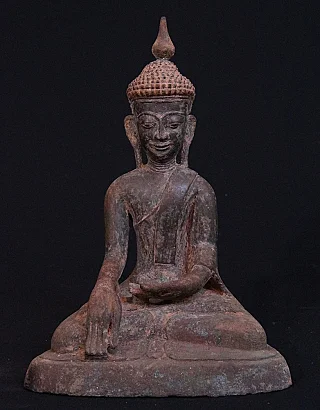Dakini – Spiritual Form of Energy in Vajrayana
Author : Peter Vredeveld

Dakini is a spiritual form of energy and represents liberation. Dakini is popularly depicted in female form riding on the white fox.
Vajrayana Buddhism, a complex and multifaceted branch of Buddhism, presents the Dakini as a critical figure symbolizing spiritual energy and liberation. Traditionally depicted as a female riding a white fox, Dakini embodies the teaching that appearances can be misleading and that inner essence holds significance. This concept underscores the principle in Vajrayana Buddhism that external appearances do not define the true nature of beings or phenomena.
The evolution of Dakini through the centuries in various Buddhist traditions adds layers to her mystique and significance. In Vajrayana Buddhism, she is not just a deity but a representation of deeper spiritual truths. Her roles vary from being a vajra master, imparting sacred teachings, to serving as a meditational deity and a protector of spiritual wisdom. The Dakini thus stands as a symbol of spiritual transformation, guiding practitioners through the complexities of their spiritual journey.
Classification of Dakinis in Tibetan Buddhism

In Tibetan Buddhism, the Dakini is revered in various forms, each representing different aspects of spiritual practice. These forms are broadly classified into four categories, reflecting the multifaceted nature of the Dakini:
1. Prajnaparamita
This secret class symbolizes profound wisdom and the realization of the emptiness of all phenomena. It represents the core of Vajrayana's teachings about the nature of reality and consciousness.
2. Mandala
As the inner class, Mandalas are intricate spiritual maps guiding meditation and inner transformation. They are tools for spiritual focus and enlightenment, embodying the soul's journey.
3. Dakini in Physical form
The Dakini's physical manifestation is a tangible connection to the divine, reminding practitioners of the sacredness inherent in all life forms.
4. Human Form
Representing human teachers and yogis, this class bridges the gap between the mundane and the spiritual, symbolizing the potential for enlightenment within every individual.
The Dakini's significance extends beyond religious rituals into cultural and societal spheres in regions where Vajrayana Buddhism is practiced. In these cultures, she symbolizes empowerment, wisdom, and transcendence, playing a vital role in historical and modern spiritual narratives. Her influence is seen in art, literature, and the oral traditions of these regions, where she often appears as a guide and mentor to spiritual seekers.
The Dakini in Japanese Buddhism
In Japanese Buddhism, Dakini is known as Dakini-ten, a unique interpretation of the deity. Unlike the traditional Buddhist representation, Dakini-ten is often depicted with a white fox, which is considered a messenger or a servant. This depiction aligns with Japanese cultural views of the fox as a creature of intelligence and magic. Dakini-ten in Japan is seen not only as a spiritual figure but also as a protector of agriculture, linking her to the god of Five Cereals in Buddhism, similar to Daikoku-ten (Mahakala). This adaptation of Dakini into Japanese Buddhist lore illustrates the flexibility and diversity of Buddhist deities as they are interpreted across different cultures.
The Dakini in Different Cultures
While rooted in Vajrayana Buddhism, the Dakini's influence spreads across various cultures and religions; in Hinduism, she appears as Kali, a powerful goddess of transformation and change. In Japanese Buddhism, known as Dakini-ten, she rides a white fox, symbolizing a messenger and protector of prosperity. This cultural crossover highlights the universal themes of transformation and spiritual insight embodied by the Dakini. Her portrayal of different cultures reflects local beliefs and traditions, yet her essence as a spiritual guide remains consistent.
In contemporary spiritual practices, the Dakini continues to inspire as a symbol of feminine strength, spiritual awakening, and the journey toward enlightenment. Her depiction in art, literature, and spiritual teachings serves as a reminder of the inner journey and the transformative power of spiritual practice. In the modern context, the Dakini is often seen as a figure who challenges conventional boundaries and encourages individuals to embrace their inner wisdom and strength.
Share this page














































